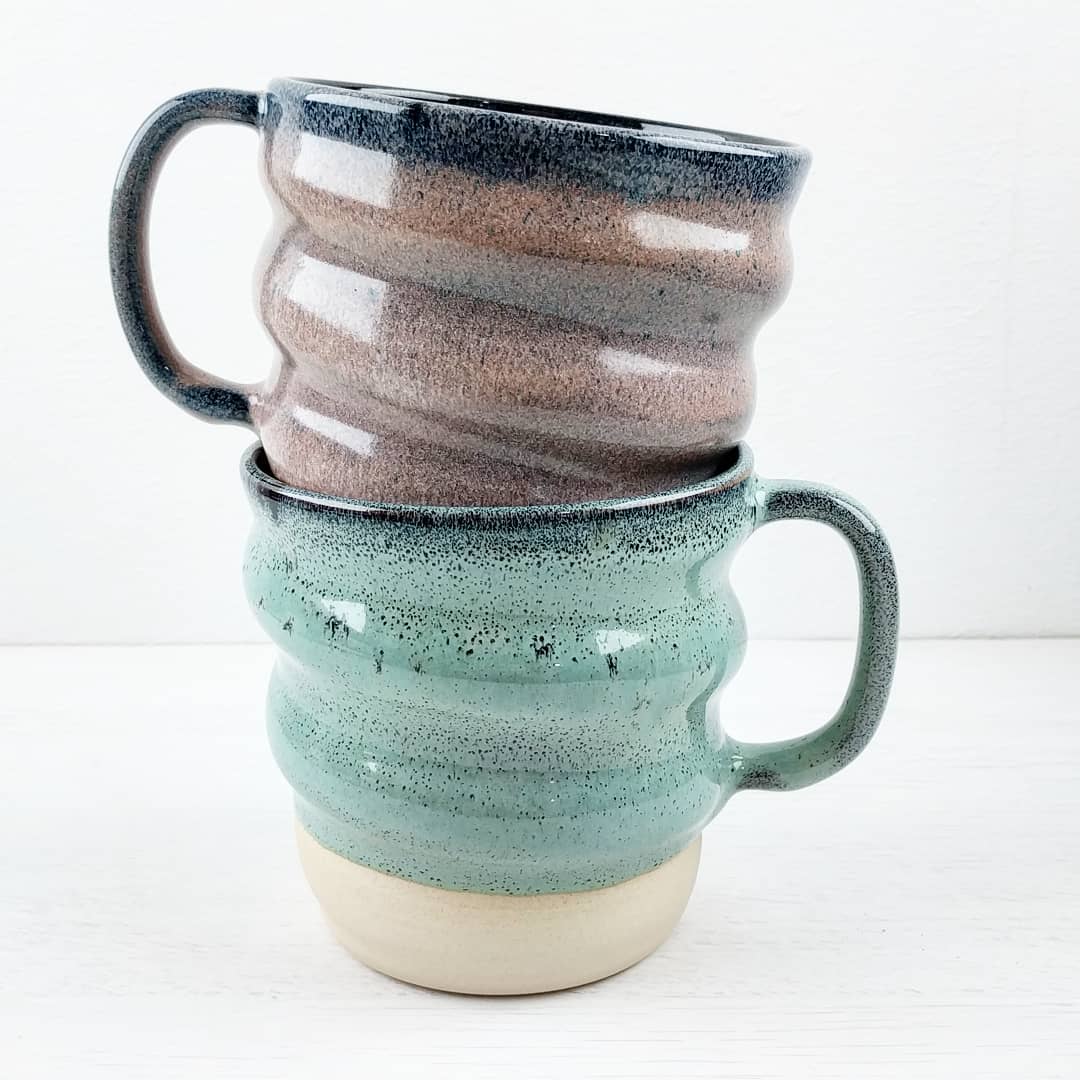Glaze Sprinkles
This simple technique allows you to make a glaze speckled with another.
It makes use of a process called sintering, where the glaze is heated enough for the ingredients to permanently fuse together without getting hot enough to melt. The sintering is crucial to this effect, as unsintered glaze chunks will just dissolve when added to another glaze, but if you heat them to the point of melting then the chunks will stick together.
The exact temperature required for sintering will depend on your glaze. There are multiple factors that affect it, such as iron content. For my cone 6 glazes, I’m sintering at 750-800c or cone 017-015. I’d suggest starting there are seeing what happens with your glazes.
This is my process:
Start by drying out a glaze. It can be one of your regular glazes, or unwanted glaze tests. You can even use glazes that you couldn’t normally use, either because they have application problems (e.g. crawling or solubility) or because they’re not for the temperature you normally fire to. Cone 06 or cone 10 sprinkles in a cone 6 base glaze will give totally different results.
Next, crush the dried glaze into smaller chunks. I crush them inside a pot with 5mm holes drilled in the lid. This allows me to filter the small pieces out as I go, leaving behind only the chunks that need to be broken up more. I find that anything larger than can fit through the 5mm holes is too large when it comes to applying them to a piece.
I then place the sprinkles in an unwanted bisqued piece and fire it to 750-800c. Depending on the glaze, this might still be too hot to avoid it fusing together, you’ll have to test to see what works for you. Firing schedule is just 150c/hr to peak with a 10 minute hold.
Depending on how small you’ve made your sprinkles and how thick you want your glaze, you can either just mix the two and apply as normal, or apply a thin coat of just the normal glaze first then brush a coat of the mixed sprinkle glaze over the top.
I’ll update this post with better finished images as I make them, but for now I wanted to show one that I felt had promise:
The base glaze was Hansen 20x5 and the sprinkles were a recipe I made specifically for the purpose. The recipe has far too much boron and nowhere near enough silica or alumina, and also has phosphorus and titanium to hopefully induce phase separation and microcrystals in other glazes. The other colourants could be changed or omitted to produce different results, and the base glaze will affect the appearance too.
A far more straightforward effect is produced if you use coventional coloured glaze sprinkles in a stiff opacified base:
That's all there is to it! Please try it and let me know how you get on, message me or use the hashtag oldforgecreations (I often miss @mentions on Instagram and there's no way to find them afterwards, but I'll see the tag). Good luck!














